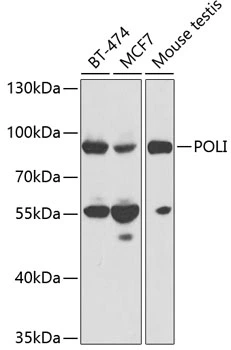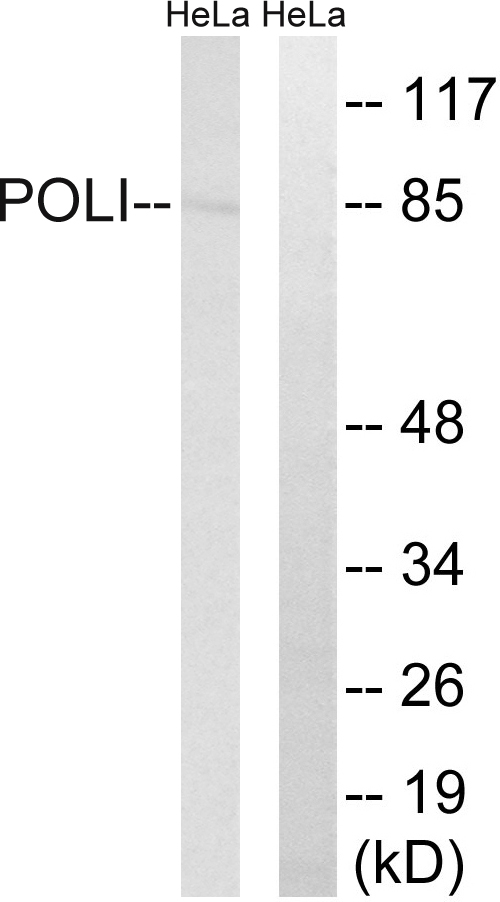DNA polymerase iota antibody
GTX112137
ApplicationsImmunoFluorescence, Western Blot, ImmunoCytoChemistry
Product group Antibodies
TargetPOLI
Overview
- SupplierGeneTex
- Product NameDNA polymerase iota antibody
- Delivery Days Customer9
- Application Supplier NoteWB: 1:500-1:3000. *Optimal dilutions/concentrations should be determined by the researcher.Not tested in other applications.
- ApplicationsImmunoFluorescence, Western Blot, ImmunoCytoChemistry
- CertificationResearch Use Only
- ClonalityPolyclonal
- Concentration1 mg/ml
- ConjugateUnconjugated
- Gene ID11201
- Target namePOLI
- Target descriptionDNA polymerase iota
- Target synonymsRAD30B, RAD3OB, eta2, DNA polymerase iota, RAD30 homolog B, polymerase (DNA directed) iota, polymerase (DNA) iota, polymerase (DNA-directed), iota
- HostRabbit
- IsotypeIgG
- Protein IDQ9UNA4
- Protein NameDNA polymerase iota
- Scientific DescriptionError-prone DNA polymerase specifically involved in DNA repair. Plays an important role in translesion synthesis, where the normal high-fidelity DNA polymerases cannot proceed and DNA synthesis stalls. Favors Hoogsteen base-pairing in the active site. Inserts the correct base with high-fidelity opposite an adenosine template. Exhibits low fidelity and efficiency opposite a thymidine template, where it will preferentially insert guanosine. May play a role in hypermutation of immunogobulin genes. Forms a Schiff base with 5-deoxyribose phosphate at abasic sites, but may not have lyase activity.
- Storage Instruction-20°C or -80°C,2°C to 8°C
- UNSPSC12352203
References
- Hutcherson RJ, Gabbard RD, Castellanos AJ, et al. Age and insulin-like growth factor-1 impact PCNA monoubiquitination in UVB-irradiated human skin. J Biol Chem. 2021,296:100570. doi: 10.1016/j.jbc.2021.100570Read this paper
- Deng X, Yan Z, Cheng F, et al. Replication of an Autonomous Human Parvovirus in Non-dividing Human Airway Epithelium Is Facilitated through the DNA Damage and Repair Pathways. PLoS Pathog. 2016,12(1):e1005399. doi: 10.1371/journal.ppat.1005399Read this paper






